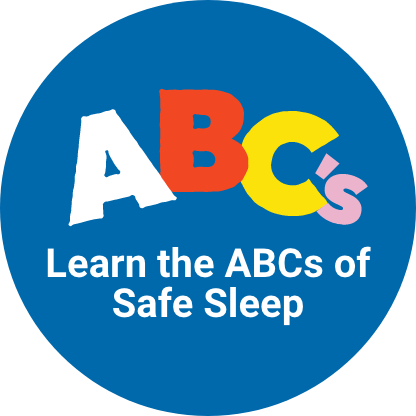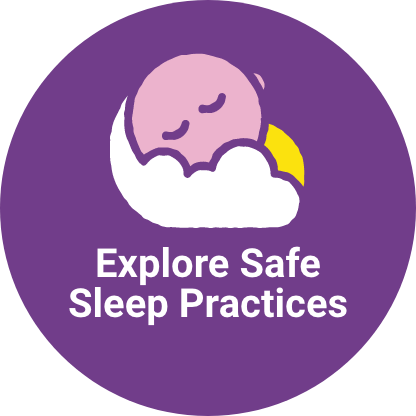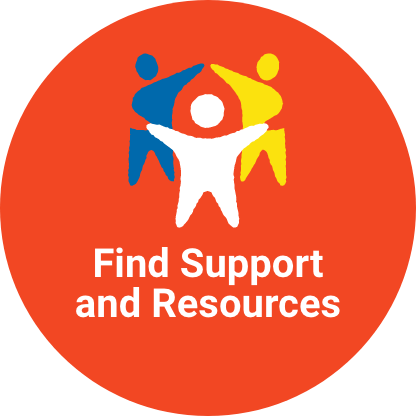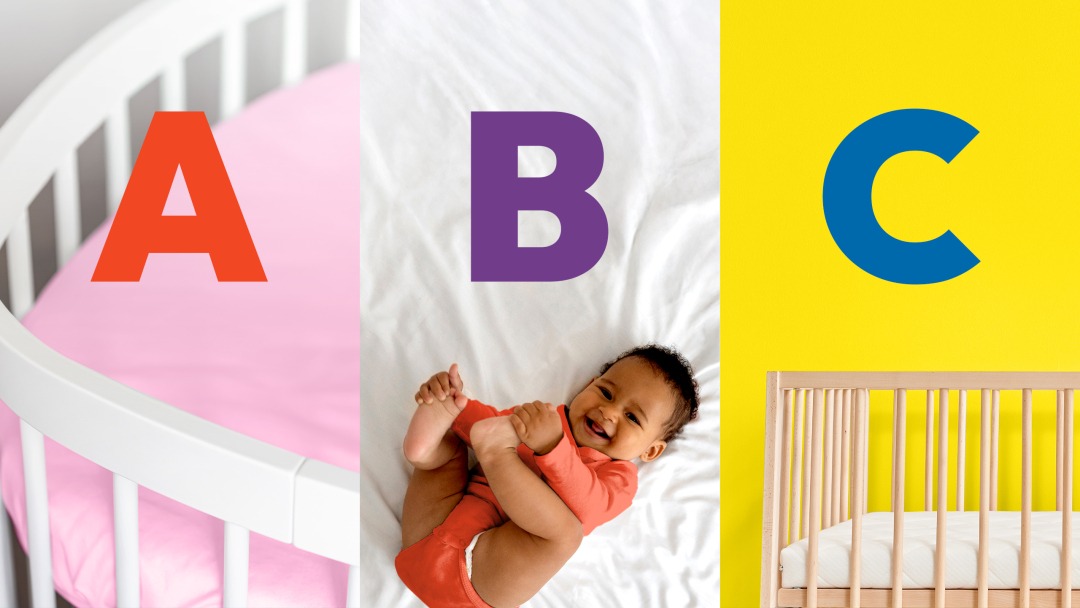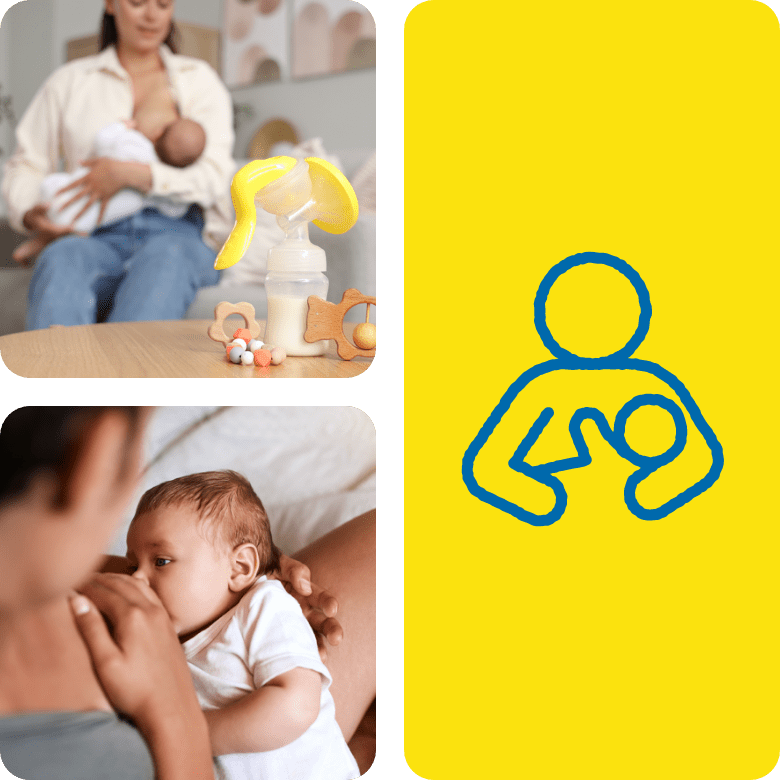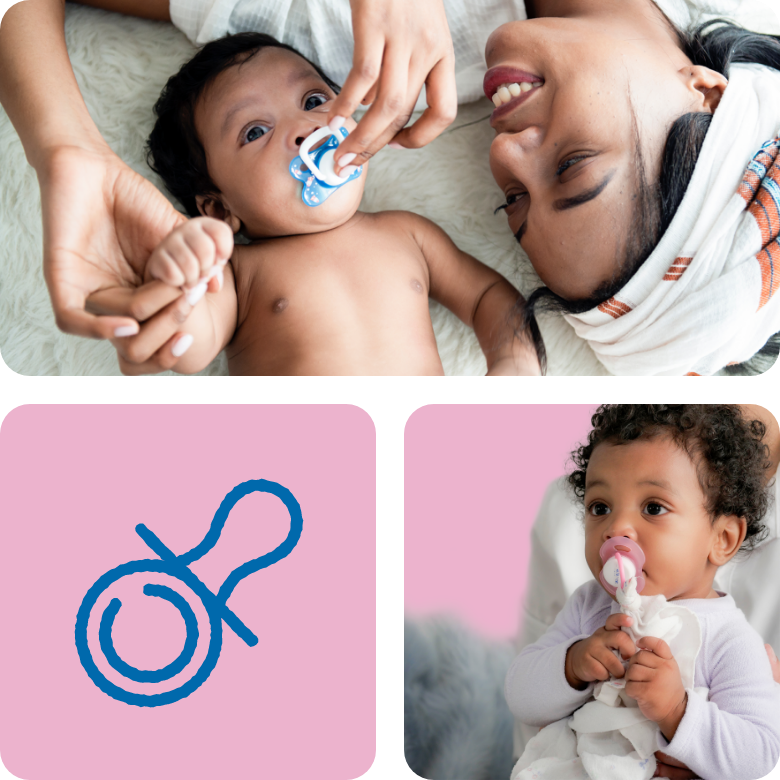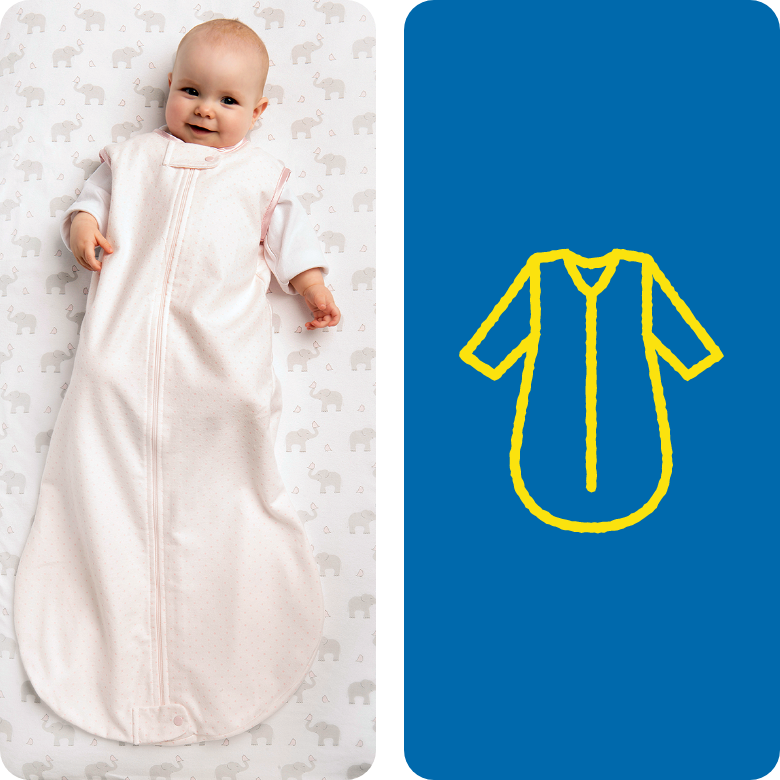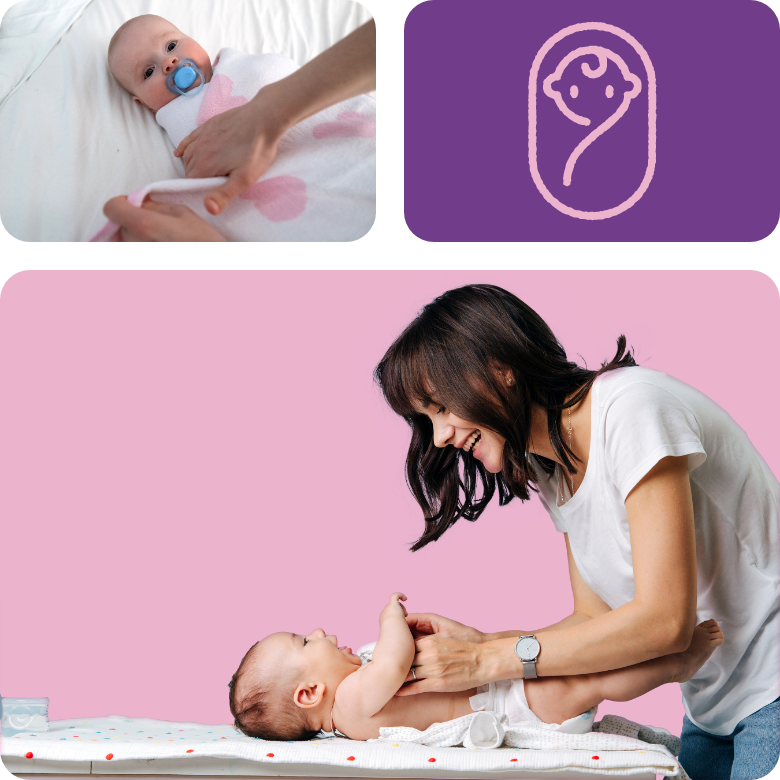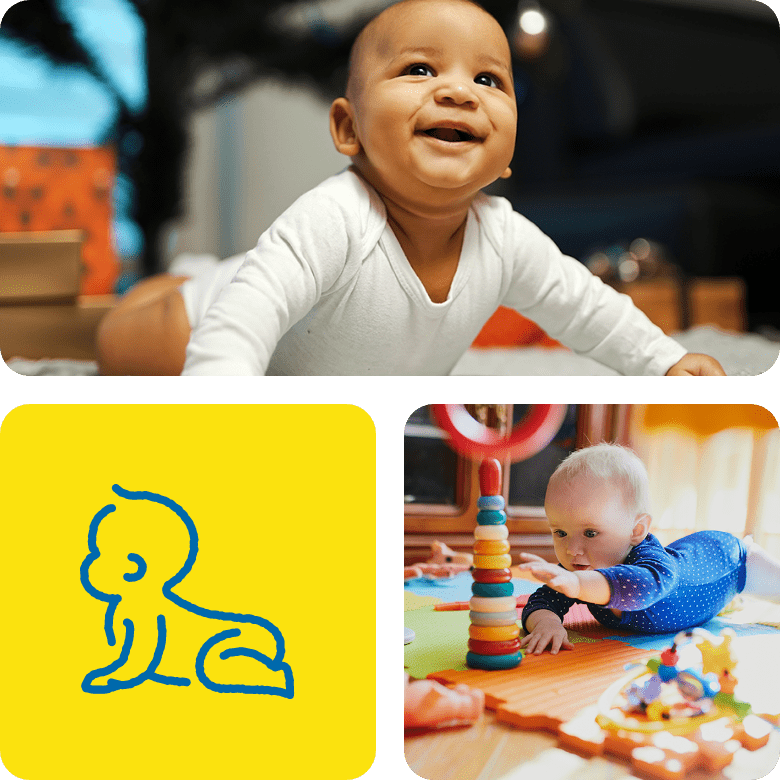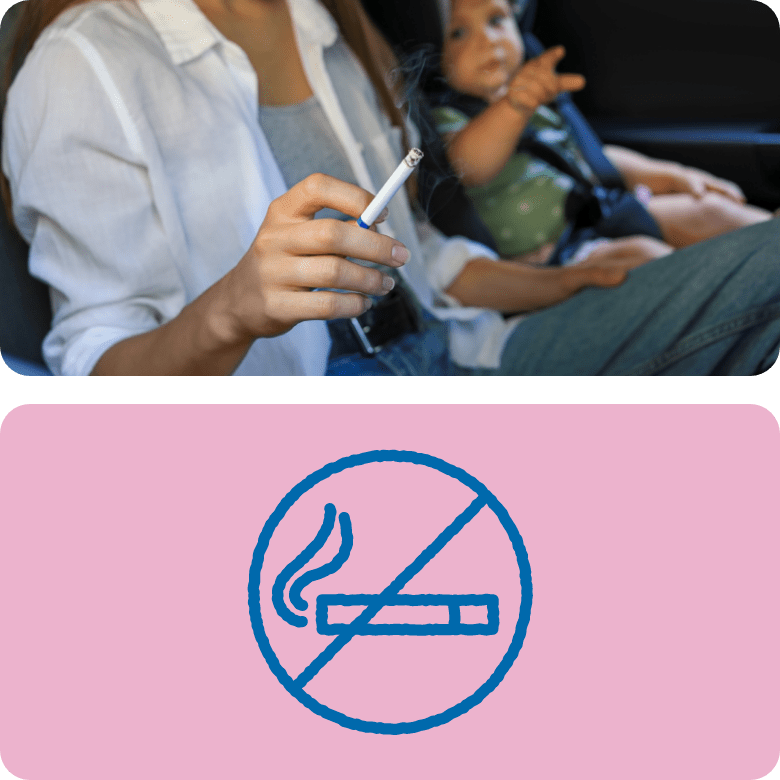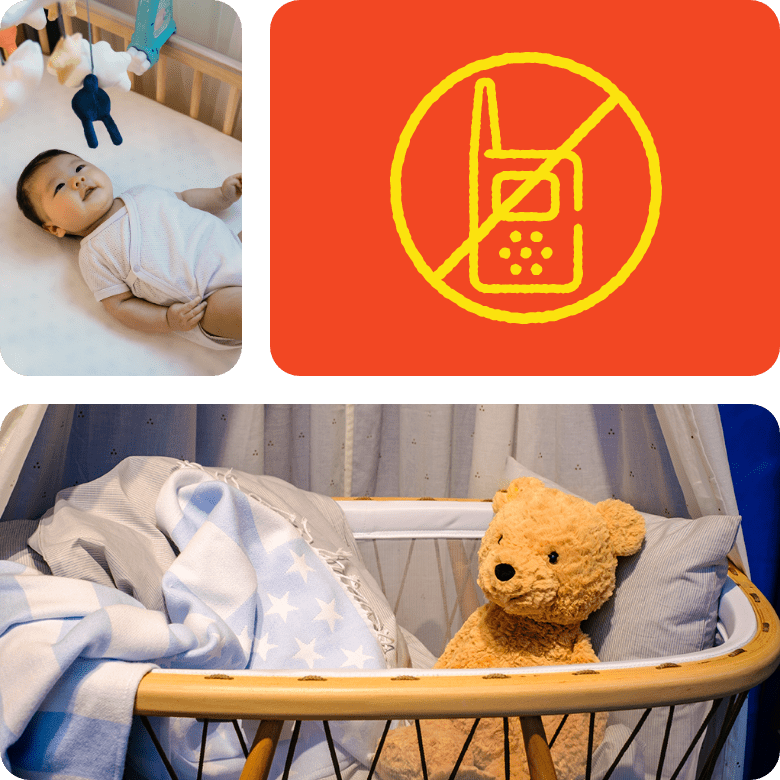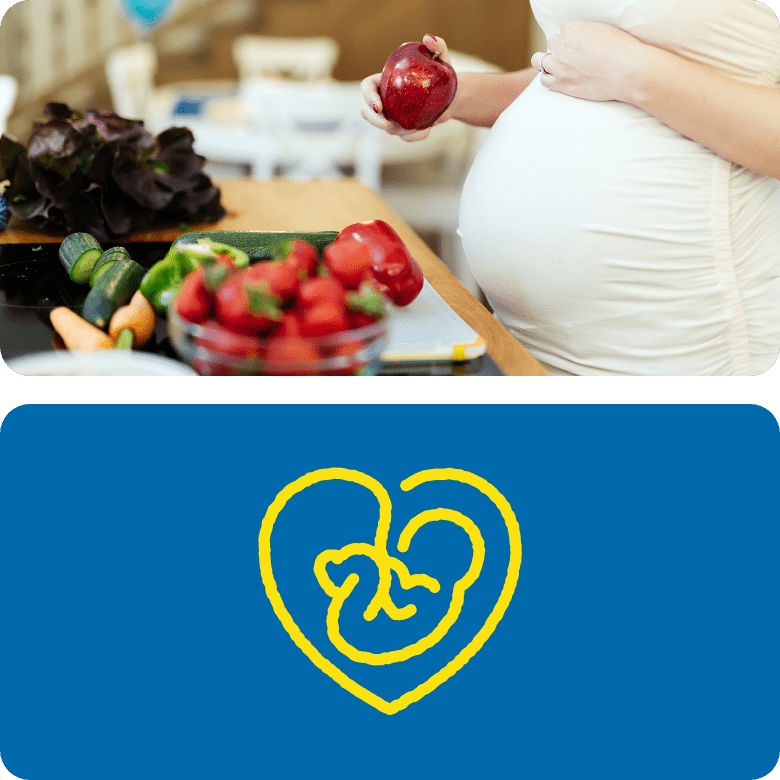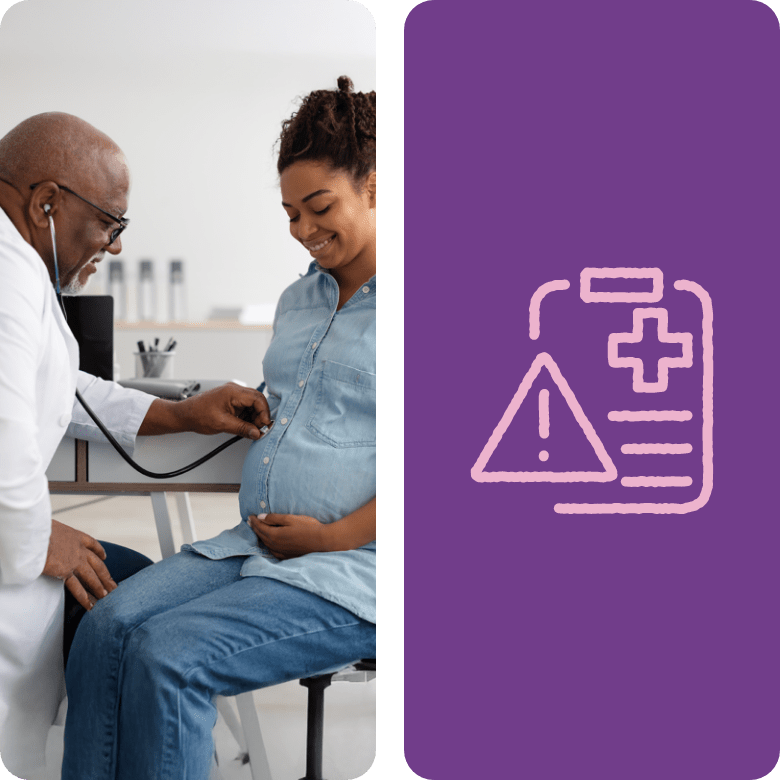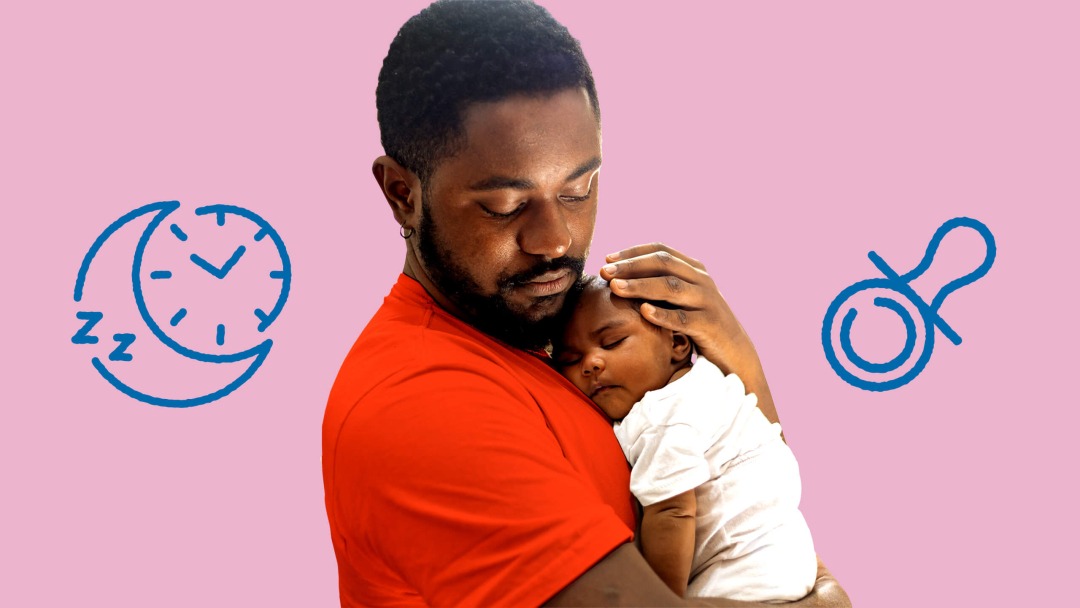
Rest Easy with
Safe Sleep Practices
Reduce the Risk of Sleep-related Deaths
Having a baby comes with a lot of unknowns, but knowing how to safely put your little one to sleep shouldn’t be one of them.
What is SUID?
SUID, or Sudden Unexpected Infant Death, is the sudden death of a baby younger than 1 year that does not have an obvious cause before investigation. SUID deaths include accidental suffocation in a sleep environment which can be due to different mechanisms such as soft bedding, wedging, overlay, or other obstruction of the airway. SUID deaths also include Sudden Infant Death Syndrome (SIDS) which have an unknown cause and other deaths from unknown causes.
In the United States alone, about 3,000 SUID occur each year.
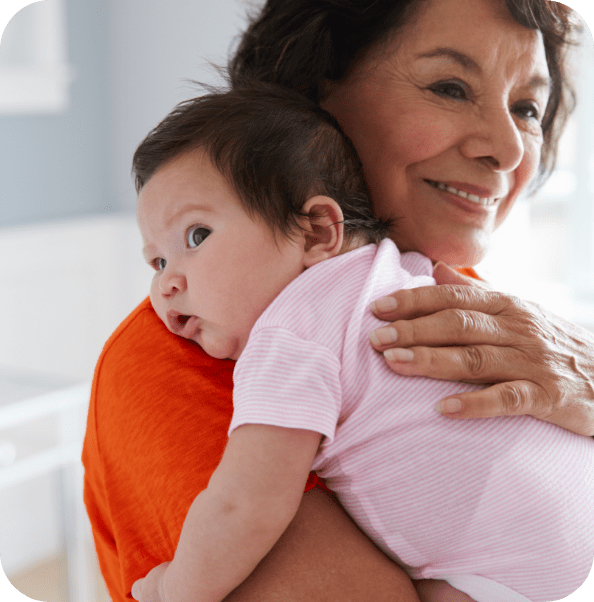
What You Can Do
As a new parent you may get a lot of advice from family and friends. It’s great to have support in your corner, but what was common practice for your parents or grandparents may not be what’s best for the baby—especially when it comes to current safe sleep recommendations.
Learning the risk of SUID, how to avoid it, and educating your family and support system are the best ways to keep your new baby safe. This quick guide will help answer any questions you have and offer tools and resources every step of the way.
What to Know
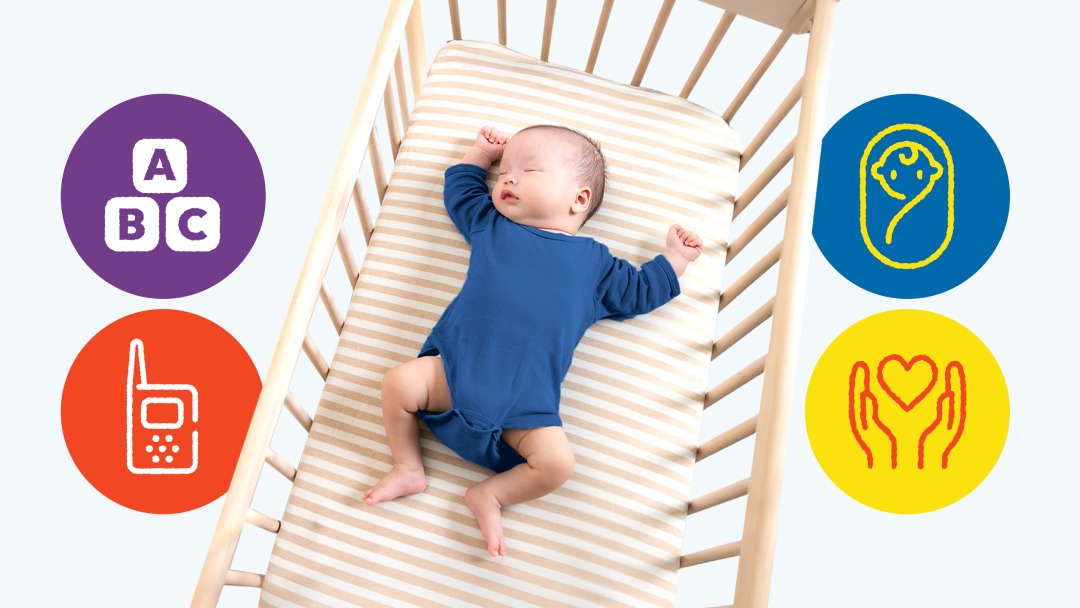
Rest Easy with
Safe Sleep Practices
Reduce the Risk of Sleep-related Deaths
Having a baby comes with a lot of unknowns, but knowing how to safely put your little one to sleep shouldn’t be one of them.
What is SUID?
SUID, or Sudden Unexpected Infant Death, is the sudden death of a baby younger than 1 year that does not have an obvious cause before investigation. SUID deaths include accidental suffocation in a sleep environment which can be due to different mechanisms such as soft bedding, wedging, overlay, or other obstruction of the airway. SUID deaths also include Sudden Infant Death Syndrome (SIDS) which have an unknown cause and other deaths from unknown causes.
In the United States alone, about 3,000 SUID occur each year.

What You Can Do
As a new parent you may get a lot of advice from family and friends. It’s great to have support in your corner, but what was common practice for your parents or grandparents may not be what’s best for the baby—especially when it comes to current safe sleep recommendations.
Learning the risk of SUID, how to avoid it, and educating your family and support system are the best ways to keep your new baby safe. This quick guide will help answer any questions you have and offer tools and resources every step of the way.
What to Know

Alone
Babies should sleep by themselves, in their own sleep space with nothing and no one else, including other children and pets. Co-sleeping in bed or on a recliner or couch significantly increases the risk of infant sleep-related death due to suffocation. The babies’ sleep space should also be free of toys, blankets, stuffed animals and other soft and plushy items. You can, however, share a room with your baby. In fact, the American Academy of Pediatrics (AAP) recommends room sharing for at least the first 6 months to reduce SUID risk. This means baby sleeps in the same room as the parents, but not in the same bed. Place baby’s crib, bassinet or portable play yard next to or close to your bed.

Back
Infants should always be placed on their back to sleep. Many cultures may consider tummy or side sleeping to be best to reduce choking risk, however, healthy babies can turn their heads if they spit up during sleep. Additionally, babies can clear fluids better when sleeping on their backs because of human anatomy.

Crib
Put baby in a crib, bassinet, or portable play yard with a flat, firm mattress and tight, fitted sheet. That’s all! No bumpers, mobiles, or monitors should be attached to the sleep space. And, of course, no toys or blankets. Couches, armchairs, and adult beds are too soft and can increase risk of suffocation.

Alone
Babies should sleep by themselves, in their own sleep space with nothing and no one else, including other children and pets. Co-sleeping in bed or on a recliner or couch significantly increases the risk of infant sleep-related death due to suffocation. The babies’ sleep space should also be free of toys, blankets, stuffed animals and other soft and plushy items. You can, however, share a room with your baby. In fact, the American Academy of Pediatrics (AAP) recommends room sharing for at least the first 6 months to reduce SUID risk. This means baby sleeps in the same room as the parents, but not in the same bed. Place baby’s crib, bassinet or portable play yard next to or close to your bed.

Back
Infants should always be placed on their back to sleep. Many cultures may consider tummy or side sleeping to be best to reduce choking risk, however, healthy babies can turn their heads if they spit up during sleep. Additionally, babies can clear fluids better when sleeping on their backs because of human anatomy.

Crib
Put baby in a crib, bassinet, or portable play yard with a flat, firm mattress and tight, fitted sheet. That’s all! No bumpers, mobiles, or monitors should be attached to the sleep space. And, of course, no toys or blankets. Couches, armchairs, and adult beds are too soft and can increase risk of suffocation.

Support and Resources
Establish & Educate Your Village
It takes a village to raise a child. Having outside support can be so helpful after bringing home a little
one. Don’t be afraid to reach out and ask for the physical and mental support you need to
be able to provide the best care for your baby.
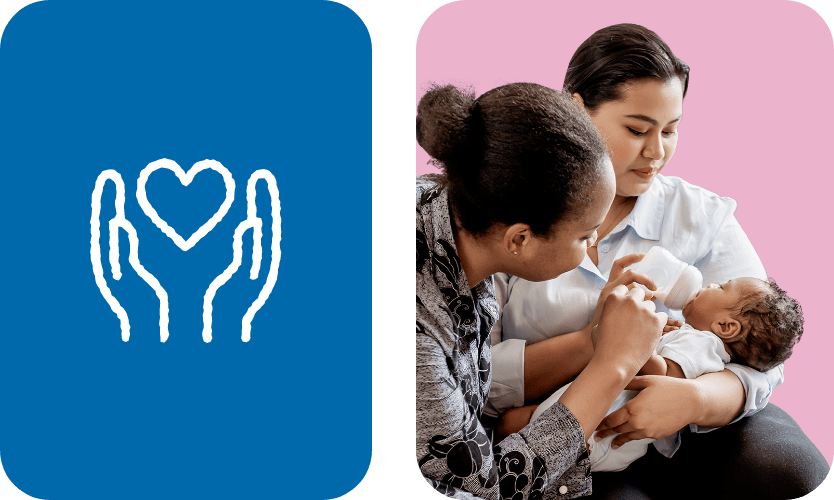
Who Can Be Your Village?
Anyone you trust can be part of your support system once baby is home, including extended family, friends, coworkers and neighbors. Health care professionals and recognized organizations can be other reliable sources of support and information when you need it most.
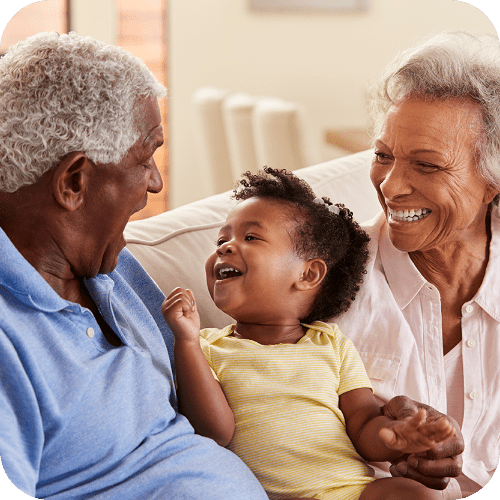

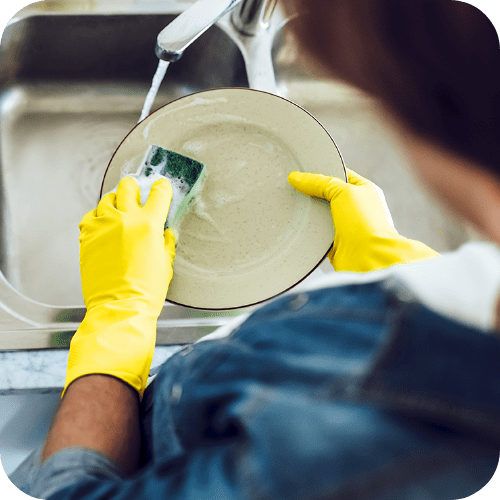
How Can They Help?
Babysitting may be the first thing that comes to mind, however, there are many ways your village can help make your transition into parenthood a little easier or lighten the load if you’re adding to your family.
Extended Family
Extended family members you trust know you and what you need to feel supported. They can help with daily household tasks like dirty dishes and laundry, which can easily pile up when a little one comes home. They can also prepare meals, hold the baby while you shower or rest, and run errands. Having trusted family members can relieve pressure and positively impact your emotional, mental, and physical well-being. You may also feel more comfortable leaving the baby with family.
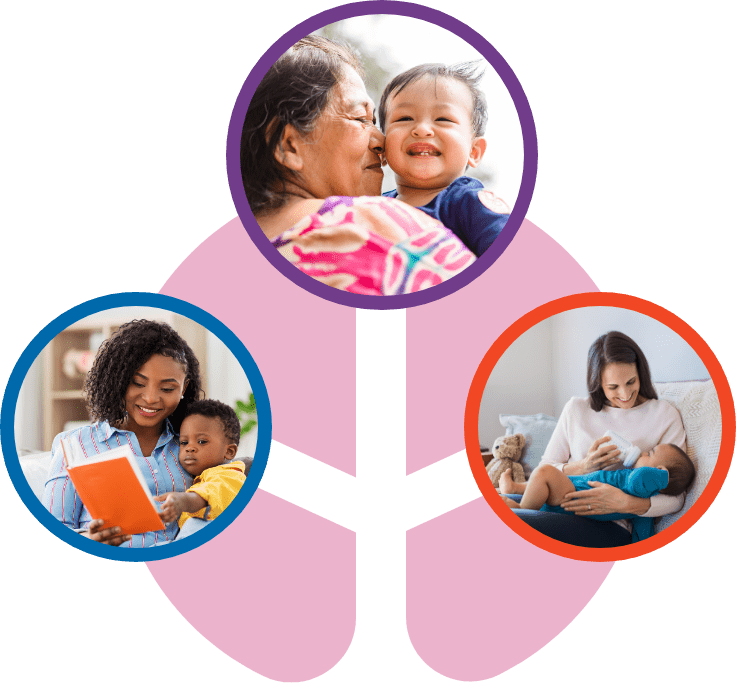
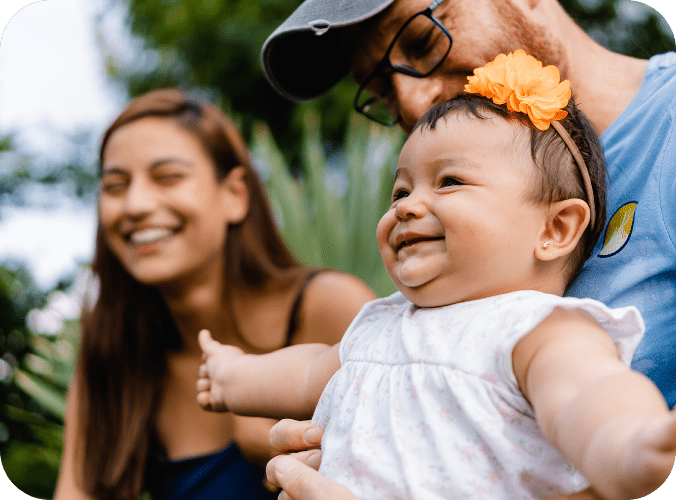
Friends, Neighbors, Coworkers
Friends can provide much needed camaraderie when parenting feels daunting. This is especially important if you don’t have nearby family or if family support is challenging. Friends can also play the role of family by picking up essential items, watching baby, and offering valuable insight and understanding, especially if they are parents themselves. Friends are also often the first to notice signs of discouragement and suggest seeking professional help.
What Do They Need to Know?
While establishing your village is crucial, it is just as important that they follow the same health and safety guidelines, including being alcohol and drug free. Understand the cultural and generational differences that may vary between members of your support system, and ensure they adhere to the safe sleep practices outlined here.

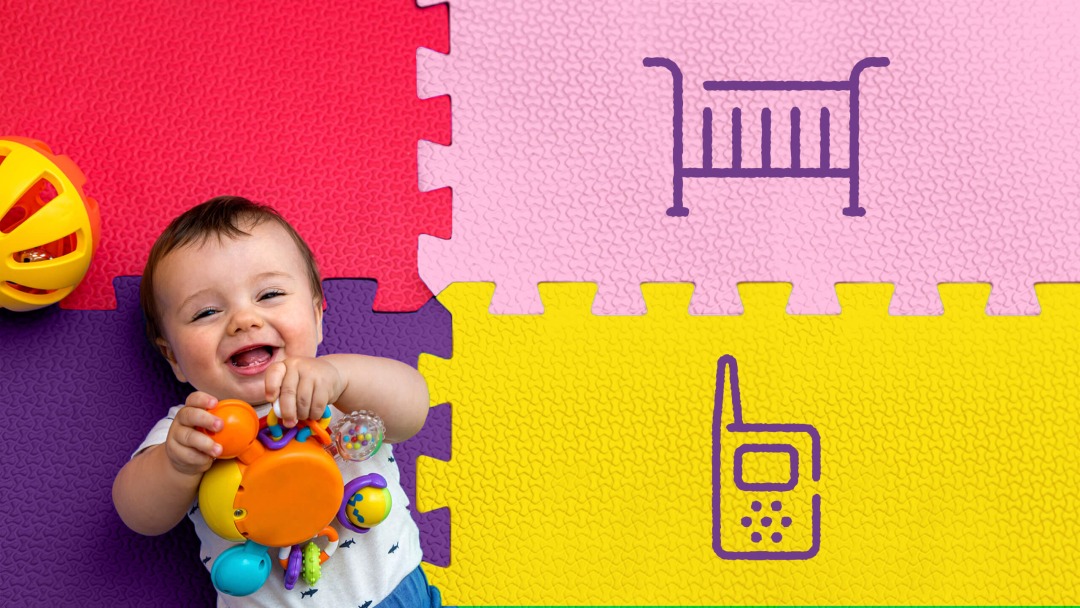
Support and Resources
Establish & Educate Your Village
It takes a village to raise a child. Having outside support can be so helpful after bringing home a little one. Don’t be afraid to reach out and ask for the physical and mental support you need to be able to provide the best care for your baby.

Who Can Be Your Village?
Anyone you trust can be part of your support system once baby is home, including extended family, friends, coworkers and neighbors. Health care professionals and recognized organizations can be other reliable sources of support and information when you need it most.



How Can They Help?
Babysitting may be the first thing that comes to mind, however, there are many ways your village can help make your transition into parenthood a little easier or lighten the load if you’re adding to your family.

Extended Family
Extended family members you trust know you and what you need to feel supported. They can help with daily household tasks like dirty dishes and laundry, which can easily pile up when a little one comes home. They can also prepare meals, hold the baby while you shower or rest, and run errands. Having trusted family members can relieve pressure and positively impact your emotional, mental, and physical well-being. You may also feel more comfortable leaving the baby with family.

Friends, Neighbors, Coworkers
Friends can provide much needed camaraderie when parenting feels daunting. This is especially important if you don’t have nearby family or if family support is challenging. Friends can also play the role of family by picking up essential items, watching baby, and offering valuable insight and understanding, especially if they are parents themselves. Friends are also often the first to notice signs of discouragement and suggest seeking professional help.

What Do They Need to Know?
While establishing your village is crucial, it is just as important that they follow the same health and safety guidelines, including being alcohol and drug free. Understand the cultural and generational differences that may vary between members of your support system, and ensure they adhere to the safe sleep practices outlined here.
Additional Help
Help can be found outside of the home, including in town and online.
Here are some great places to start:
| Who Can Help | How They Can Help |
|---|---|
 |
View educational materials for health care providers, parents and caregivers to help prevent sleep-related causes of infant death. |
 |
Expecting or caring for a baby? Take these steps to help baby sleep safely and reduce the risk of sleep-related infant deaths, including sudden infant death syndrome (SIDS) and accidental suffocation. |
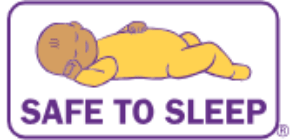 |
Helping to reduce the risk of Sudden Infant Death Syndrome (SIDS) and other sleep-related infant deaths. |
 |
Protecting children from abuse and neglect by partnering with our community to build safe, nurturing, and stable families, to support family preservation, when possible, to provide permanent families for those children who cannot safely return home and to ensure the well-being of children in our care. |
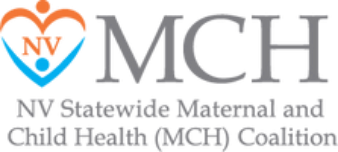 |
Partnership with Cribs for Kids to promote safe infant sleep and prevent Sudden Unexpected Infant Death (SUID). We care about the infants in our community and want to do our part to ensure they have a safe sleeping environment. |
 |
WIC is the USDA Special Supplemental Nutrition Program for Women, Infants and Children (WIC) and provides nutrition and breastfeeding services and supplemental foods to pregnant women, new mothers, infants and children up to their 5th birthday. We offer a wide array of nutritional education, personalized breastfeeding support, and referrals to other public health programs. WIC gives you resources, knowledge and tools to help you and support your family. It’s free for moms, dads, grandparents, foster parents and all Nevada families who qualify. We work hard to get the right personalized support for you and your family. |
 |
Nevada’s Just in Time Training is a web-based service program designed to connect foster parents, kinship, of other caregivers with training, peer experts, and other resources. Questions are answered and practical solutions to care for children are discussed – all from the comfort of your home or office. |
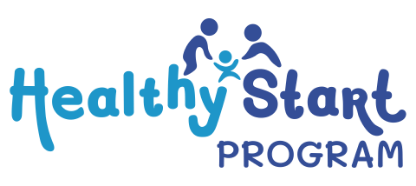 |
Healthy Start is a federal program funded through the Health Resources and Services Administrations (HRSA) dedicated to reducing disparities in maternal and infant health status in high-risk communities. At SNHD, the Healthy Start program is a free and voluntary case management program serving mothers and infants who live in Clark County. To enroll, a woman must be pregnant or have a child younger than 12 months old. Fathers are encouraged to join the program if they are connected to a mother who is already enrolled. |
 |
Baby’s Bounty supports and empowers at-risk families by providing education and the essential tools to ensure a good start for every baby. – Offer Baby Shower-In-a-Bag VISIT WEBSITE TO LEARN MORE ▶ |
 |
Provides cribs to babies whose mothers could not afford them and educates mothers about the dangers of unsafe sleep environments. |
 |
The Children’s Cabinet’s mission has been to keep children safe and families together by providing services and resources that address unmet needs through a unique and effective cooperative effort between the private sector and public agencies in Nevada.
– Offer services for children and families from birth |
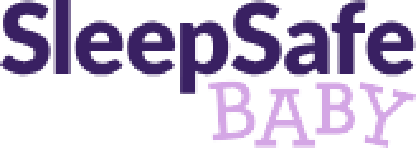 |
Learn the ABC’s of Safe Sleep: The ABCs of Safe Sleep – FREE THIS SIDE UP OnesieVISIT WEBSITE TO LEARN MORE ▶ |
 |
More resources for your newborn. |
 |
Top 10 Tips on Safe Sleep for Babies. |
The Centers for Disease Control and Prevention, Department of Health and Human Services provided financial support for this web page. The award provided 100% of total costs and totaled $45,000. The contents are those of the author. They may not reflect the policies of the Department of Health and Human Services or the U.S. government.
Additional Help
Help can be found outside of the home, including in town and online.
Here are some great places to start:
| Who Can Help | How They Can Help |
|---|---|
 |
View educational materials for health care providers, parents and caregivers to help prevent sleep-related causes of infant death. |
 |
Expecting or caring for a baby? Take these steps to help baby sleep safely and reduce the risk of sleep-related infant deaths, including sudden infant death syndrome (SIDS) and accidental suffocation. |
 |
Helping to reduce the risk of Sudden Infant Death Syndrome (SIDS) and other sleep-related infant deaths. |
 |
Protecting children from abuse and neglect by partnering with our community to build safe, nurturing, and stable families, to support family preservation, when possible, to provide permanent families for those children who cannot safely return home and to ensure the well-being of children in our care. |
 |
Partnership with Cribs for Kids to promote safe infant sleep and prevent Sudden Unexpected Infant Death (SUID). We care about the infants in our community and want to do our part to ensure they have a safe sleeping environment. |
 |
WIC is the USDA Special Supplemental Nutrition Program for Women, Infants and Children (WIC) and provides nutrition and breastfeeding services and supplemental foods to pregnant women, new mothers, infants and children up to their 5th birthday. We offer a wide array of nutritional education, personalized breastfeeding support, and referrals to other public health programs. WIC gives you resources, knowledge and tools to help you and support your family. It’s free for moms, dads, grandparents, foster parents and all Nevada families who qualify. We work hard to get the right personalized support for you and your family. |
 |
Nevada’s Just in Time Training is a web-based service program designed to connect foster parents, kinship, of other caregivers with training, peer experts, and other resources. Questions are answered and practical solutions to care for children are discussed – all from the comfort of your home or office. |
 |
Healthy Start is a federal program funded through the Health Resources and Services Administrations (HRSA) dedicated to reducing disparities in maternal and infant health status in high-risk communities. At SNHD, the Healthy Start program is a free and voluntary case management program serving mothers and infants who live in Clark County. To enroll, a woman must be pregnant or have a child younger than 12 months old. Fathers are encouraged to join the program if they are connected to a mother who is already enrolled. |
 |
Baby’s Bounty supports and empowers at-risk families by providing education and the essential tools to ensure a good start for every baby. – Offer Baby Shower-In-a-Bag VISIT WEBSITE TO LEARN MORE ▶ |
 |
Provides cribs to babies whose mothers could not afford them and educates mothers about the dangers of unsafe sleep environments. |
 |
The Children’s Cabinet’s mission has been to keep children safe and families together by providing services and resources that address unmet needs through a unique and effective cooperative effort between the private sector and public agencies in Nevada.
– Offer services for children and families from birth |
 |
Learn the ABC’s of Safe Sleep: The ABCs of Safe Sleep – FREE THIS SIDE UP Onesie |
 |
More resources for your newborn. |
 |
Top 10 Tips on Safe Sleep for Babies. |
The Centers for Disease Control and Prevention, Department of Health and Human Services provided financial support for this web page. The award provided 100% of total costs and totaled $45,000. The contents are those of the author. They may not reflect the policies of the Department of Health and Human Services or the U.S. government.
Updated on: May 22, 2025


